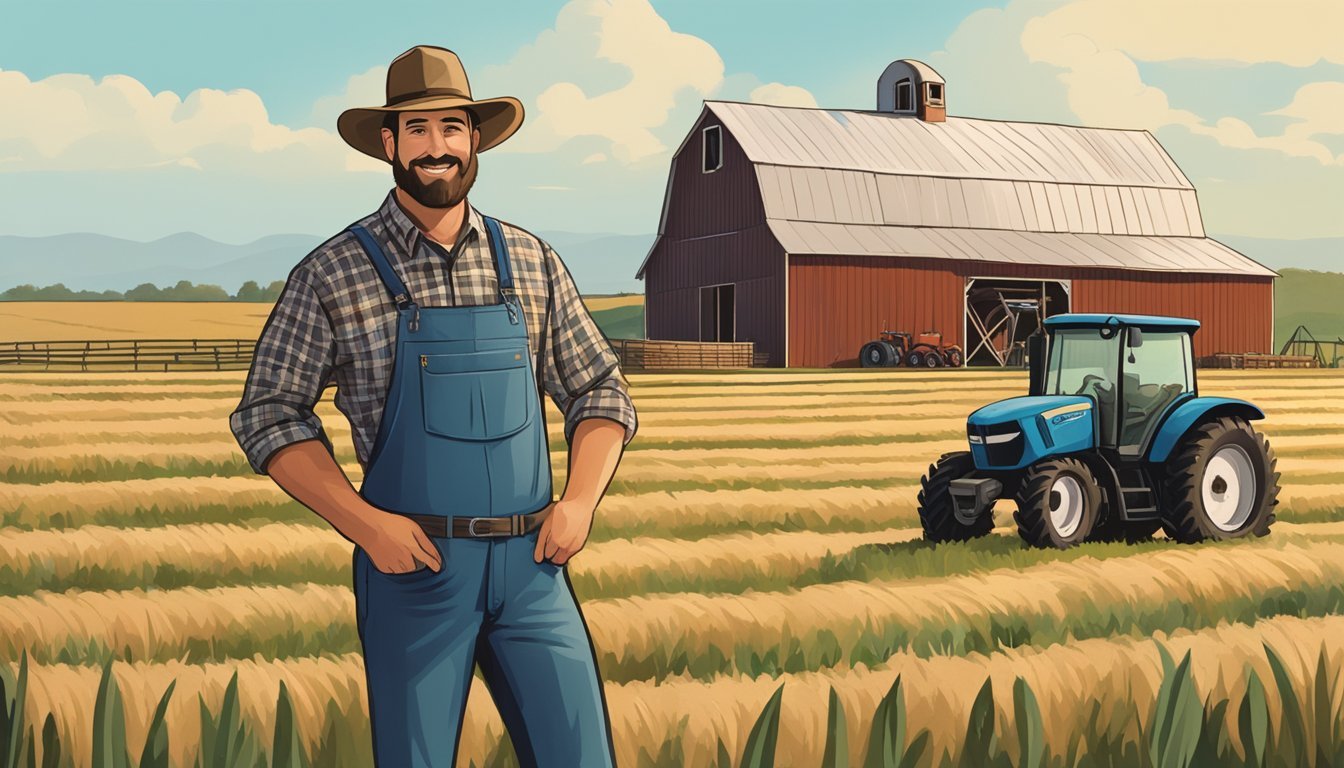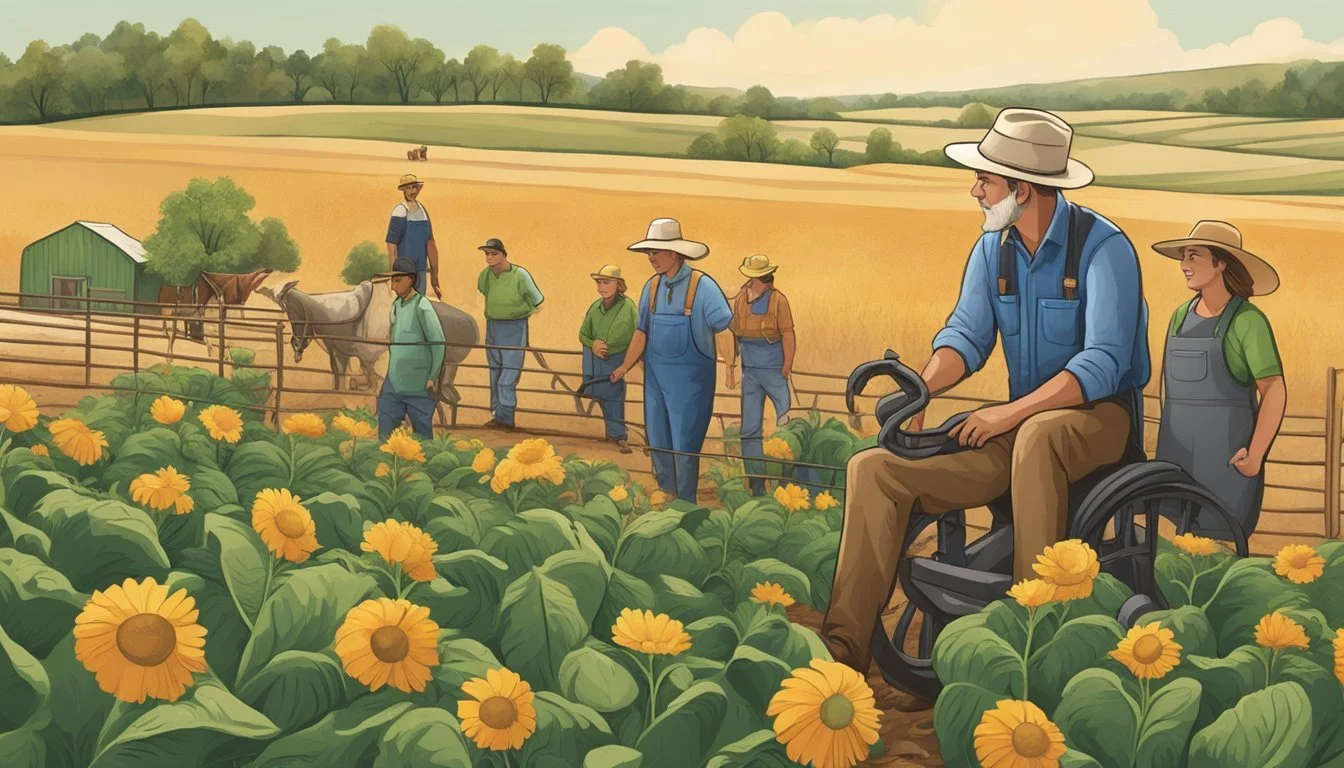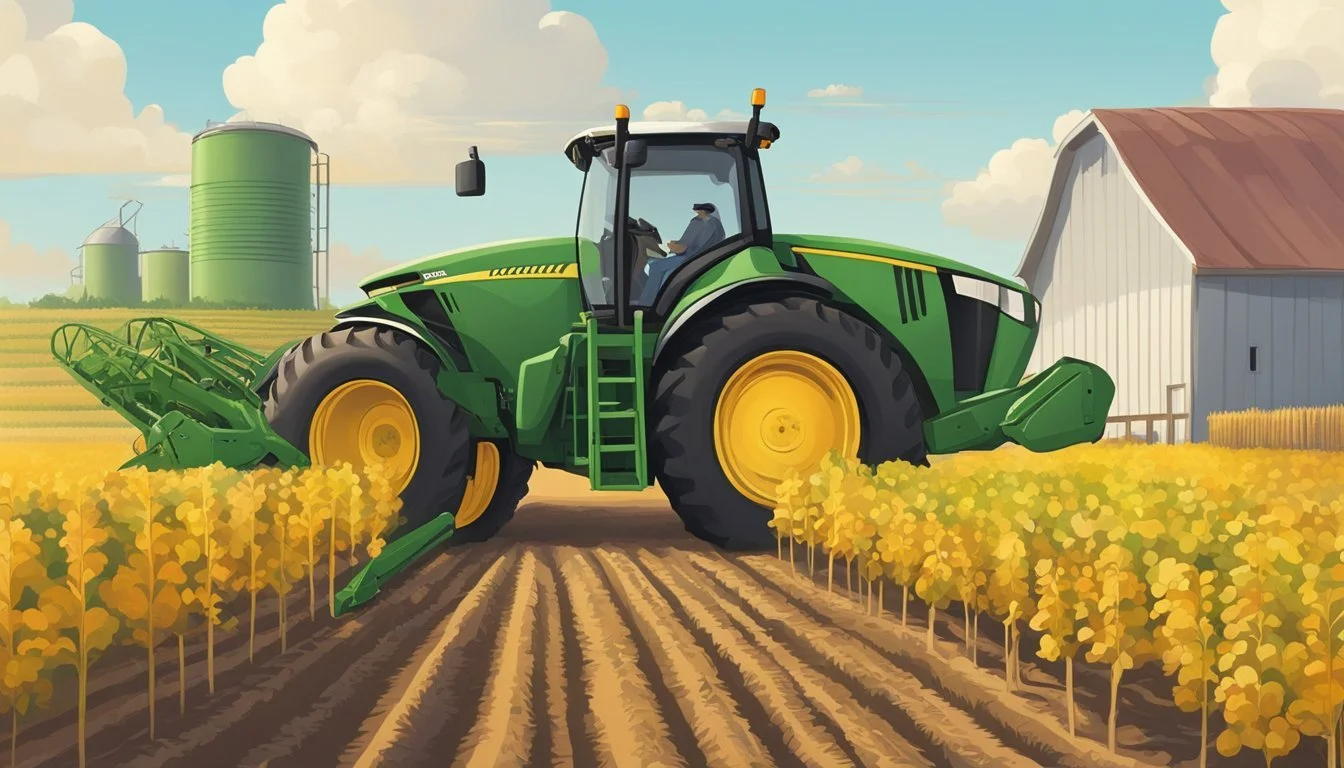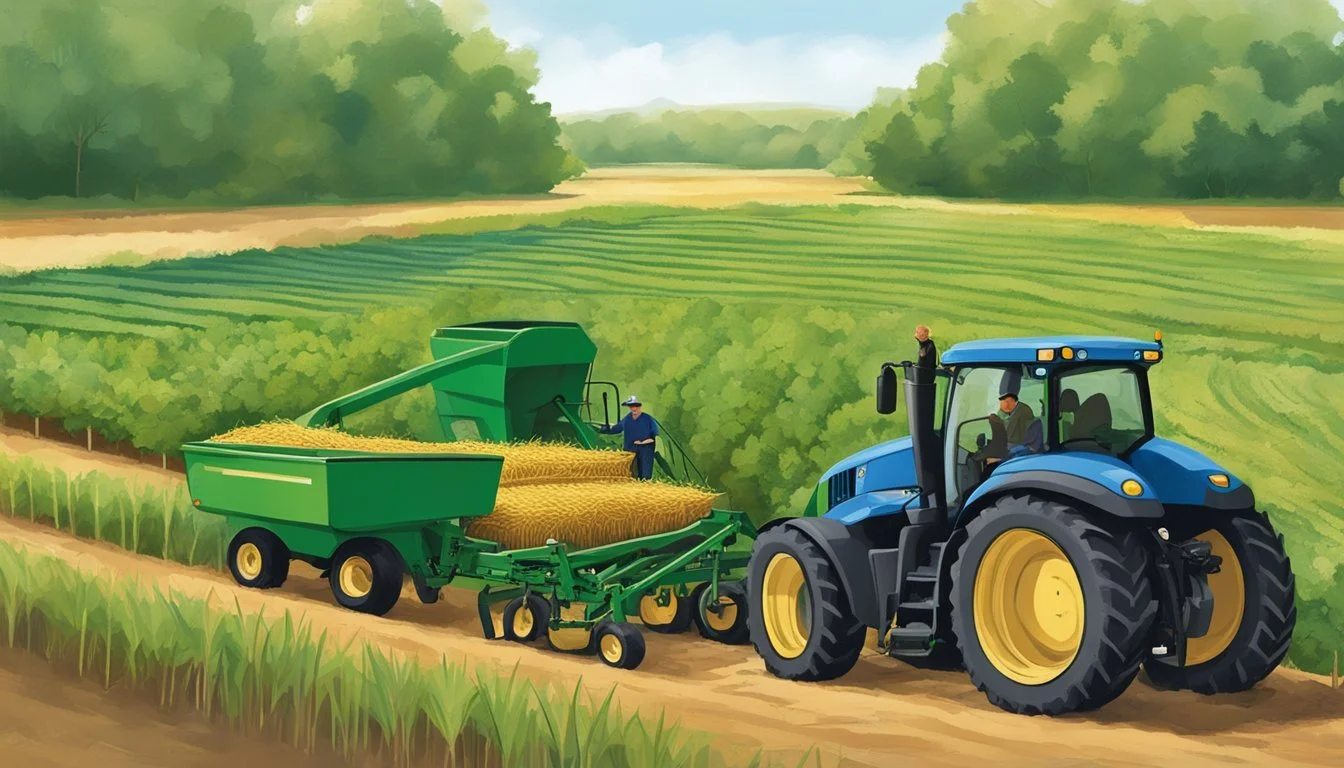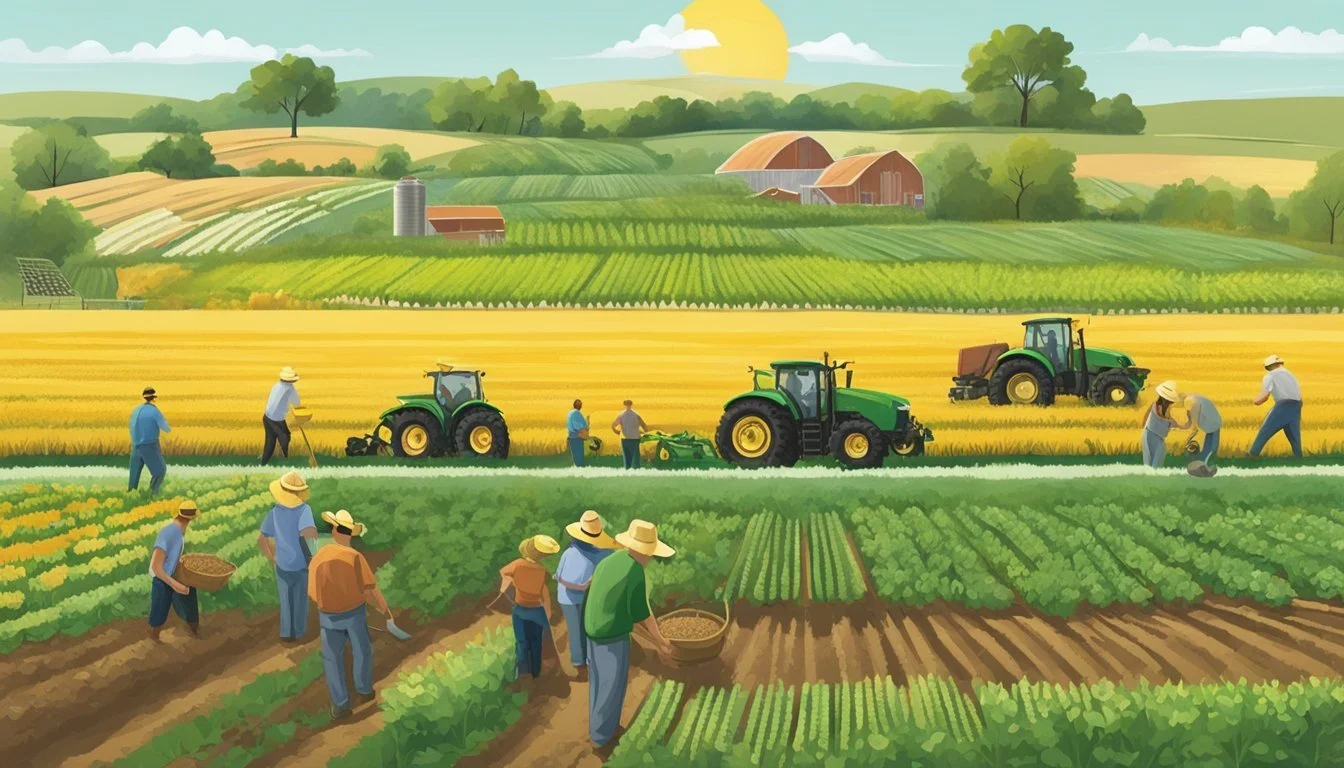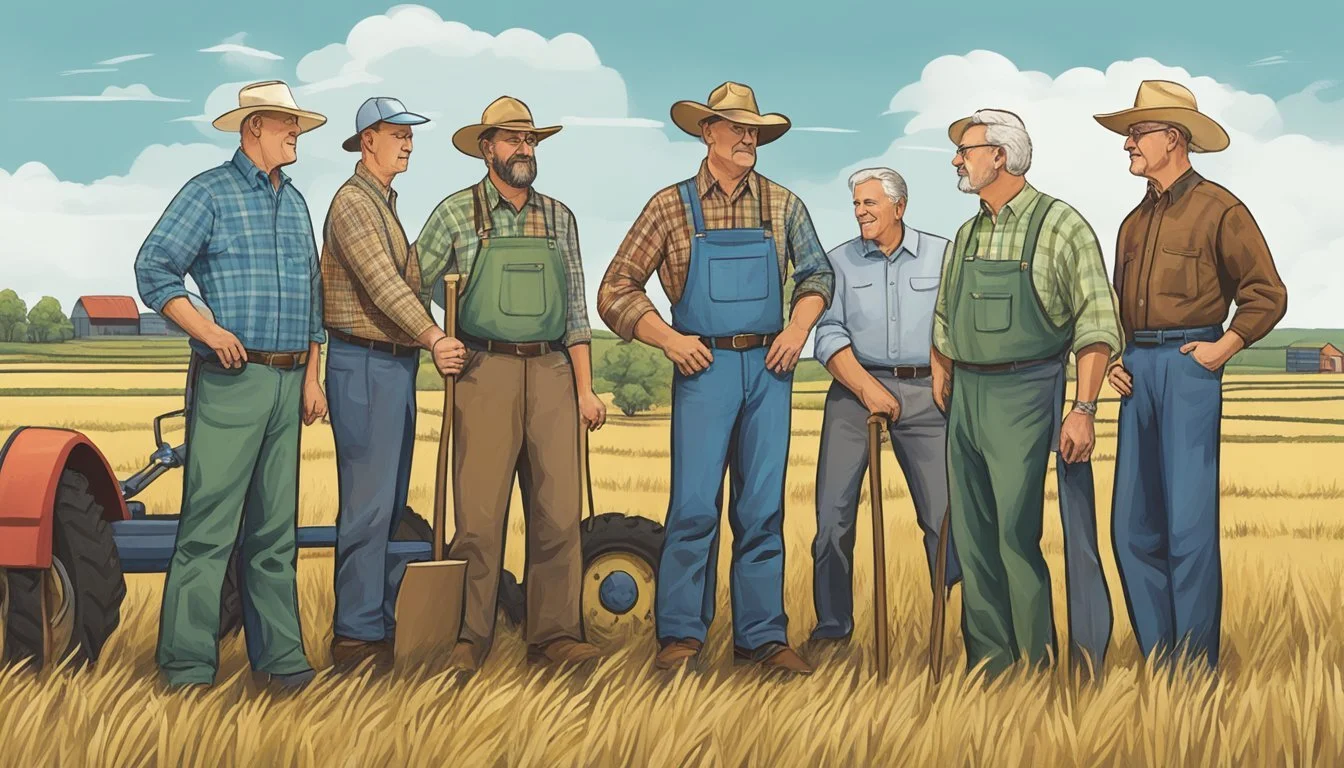Farming Grants Oklahoma
Navigating Financial Aid for Agricultural Advancement
In Oklahoma, agricultural grants present avenues for small-scale farms and agricultural businesses to secure funding without the financial burden of repayment. These grants are specifically designed to foster agricultural innovation, promote the diversification of farm operations, and assist in the education of consumers about their food sources. Funding opportunities provided by various foundations and state programs are instrumental for farmers looking to introduce non-traditional crops, start on-farm processing, or develop agritourism ventures.
The landscape of farming grants in Oklahoma includes offerings like the Oklahoma Farm Bureau Foundation for Agriculture, which in recent years has allocated funds for the development of agricultural education. The state's Department of Agriculture, Food, and Forestry also provides resources through programs such as the Oklahoma Agriculture Enhancement and Diversification Program. These initiatives aim to bolster Oklahoma's agricultural community by providing financial support for projects that might otherwise be unattainable for farmers and ranchers.
Navigating the grant application process demands attention to detail, as these programs often require a focused scope and specific outcomes, such as educational outreach or demonstration projects that share knowledge with other producers and consumers. While the competitive nature of these grants means not all who apply will receive funding, the benefits for successful applicants can significantly impact the sustainability and growth of their agricultural enterprises.
Overview of Farming Grants in Oklahoma
The state of Oklahoma recognizes the importance of agriculture as a pivotal sector in its economy. To support this industry, several grant programs aim to assist farmers, particularly those operating on a small scale or embarking on specialty crops and agritourism ventures. The Agricultural Enhancement and Diversification Program is one initiative by the government that enables the industry's growth and diversification.
Entities such as the Oklahoma Department of Agriculture, Food, and Forestry (ODAFF) facilitate various funding opportunities. These programs are designed not only to sustain the existing agricultural practices but also to encourage innovation and expansion into non-traditional agricultural products.
The types of grants include, but are not limited to:
Farm Diversification Grants: Targeted at farmers looking to diversify their operations through non-traditional crops or livestock and agritourism.
Specialty Crop Block Grants: Aimed at enhancing the competitiveness of specialty crops.
Healthy Food Financing Programs: To improve access to nutritious food by supporting various stages of the supply chain.
To obtain these grants, prospective applicants must usually submit proposals that align with the mission to enhance Oklahoma's agriculture. Maximum funding amounts vary, with some grants offering up to $10,000 to qualified projects. The Oklahoma Farm Bureau Foundation for Agriculture has also contributed by providing funding to initiatives that connect consumers with agricultural producers and educate them about food sources. Detailed information and application instructions are typically available on relevant .gov websites dedicated to state agriculture programs.
Eligibility and Application Process
In Oklahoma, various grant programs have been established to support farmers and ranchers in their efforts to diversify and enhance production. Understanding the qualifications for applicants and adhering to the application submission guidelines is critical for a successful bid for funding.
Qualifications for Applicants
To be eligible for agricultural grants in Oklahoma, applicants typically must be actively involved in the farming or ranching industries. Specific programs may target:
Beginning farmers or ranchers: Those who have recently started in agriculture could receive prioritization.
Socially-disadvantaged farmers or ranchers: This includes individuals who are part of groups that have been historically underrepresented in the farming community.
Small-to-medium sized operations: Size constraints may apply, focusing aid toward farms of a certain scale.
Innovative project proponents: Those with new ideas for non-traditional or specialty crops, on-farm processing, or agritourism ventures are often sought after by grant programs.
Projects must fall within the scope defined by the grant, which could include diversification into non-traditional crops or livestock, implementation of on-farm processing, or the development of agritourism ventures. Many USDA programs have additional eligibility requirements that must be met, and these can vary by the specific program.
Application Submission Guidelines
When applying for grants, Oklahoma farmers and ranchers should carefully compile and submit their proposals according to the following guidelines:
Proposal Content:
A detailed business plan.
Prior successes and learnings from past experiences.
Clearly defined goals and timetables for returns on investment.
Submission Deadline:
Applications should be submitted by the specified date, which could vary among programs—for example, a July 1 deadline for Farm Diversification grants.
Required Documentation:
Evidence of farming or ranching activities.
Verification of eligibility status concerning size or type of farm, or demographic criteria.
Format and Delivery:
Proposals should follow the format required by the granting body.
Submitted through the recommended channels, which may include online portals or mailed hard copies.
Each program will have its own set of rules and requirements, and applicants should ensure full compliance to avoid disqualification. It is advised to consult the individual grant program's guidelines or reach out to their support services for detailed application instructions.
Types of Farming Grants Available
Oklahoma offers a variety of funding opportunities aimed at supporting the agricultural industry. These grants and loans are designed to cater to diverse farming needs, from enhancing operational efficiency to sponsoring agricultural events.
Direct Financial Assistance
Direct financial assistance is available through the Oklahoma Farm Bureau Foundation for Agriculture, which awards over $16,000 to organizations and schools. This includes farm diversification grants, intended for farmers seeking to diversify their operations.
Loans and Loan Guarantees
The state facilitates loans and loan guarantees to aid farmers in their marketing efforts and overall business growth. Options include the marketing and utilization loan and the cooperative marketing loan, both aiming to help expand market reach and enhance cooperative marketing ventures.
Research and Development Grants
Oklahoma encourages innovation with research and development grants. The basic and applied research loan/grant program supports projects that improve agricultural processes, aiming to foster a robust research culture within the farming sector.
Agritourism Development Grants
Farmers engaged in or wishing to branch out into agritourism can seek support through agritourism development grants. These are part of the Oklahoma Agriculture Enhancement and Diversification Program (AEDP), which provides funding to diversify farming operations or agritourism ventures.
Agricultural Economic Development
In Oklahoma, initiatives aimed at agricultural economic development are capitalizing on both rural economic opportunities and innovative farm diversification strategies. These efforts are crucial for enhancing the state’s agricultural businesses and wider economic health.
Promoting Rural Economic Opportunities
Rural areas in Oklahoma benefit from programs designed to boost economic development through agriculture. One such initiative is the Resilient Food Systems Infrastructure Program, which aims to enhance food systems and infrastructure resilience. The Oklahoma Department of Agriculture, Food, and Forestry (ODAFF) plays an instrumental role by providing resources and support, exemplified by the contact availability of Jason Harvey (405-606-1477, [email protected]). Further, the Specialty Crop Block Grant Program and Oklahoma Viticulture and Enology Fund support the development of niche agricultural markets that can lead to increased income streams for rural communities.
Supporting Farm Diversification
The Oklahoma Agriculture Enhancement and Diversification Program offers financial assistance to incentivize the exploration of non-traditional crops and agritourism venues, thereby promoting farm diversification. This support is manifested through:
Farm Diversification Grant: Grants up to $10,000 are available for innovative agricultural projects, such as non-traditional crop or livestock production, on-farm processing, and agritourism development.
Economic Development & Agriculture Markets: The ODAFF encourages ventures in specialty crops and value-added products through programs like the Healthy Food Financing Program.
Farm diversification initiatives contribute to a robust agricultural sector and offer rural entrepreneurs tools to adapt and thrive in a changing economic landscape.
Additional Resources and Support Services
Farmers and small business owners in Oklahoma seeking to enhance their operations have access to a variety of support services and grant programs. These resources provide guidance from initial planning stages through to the execution of educational and diversification strategies.
Consultation and Planning
The state board of agriculture and various agencies offer personalized consultation and technical assistance to help develop comprehensive business plans. Farmers can utilize services to research market trends and craft plans tailored to specialty crops or agritourism ventures. Small business owners in the agricultural sector benefit from this guidance by establishing well-informed and sustainable business strategies.
Educational Programs and Workshops
Educational programs and workshops are pivotal in equipping farmers with the necessary skills and knowledge to succeed. These include:
Grant Writing Workshops: Educating on how to navigate grant applications effectively.
Agricultural Workshops: Covering diverse topics from crop management to livestock care.
Business Management Seminars: For reinforcing sound financial and operational practices.
Both new and established farmers are encouraged to engage with these programs to remain abreast of modern agricultural practices and market developments.
Utilizing Technology and Innovation
In the pursuit of enhancing Oklahoma's agricultural output, farmers and agribusinesses are turning to technology and innovation. These advancements are fostering more efficient food production systems and encouraging sustainable agricultural practices.
Advancements in Agricultural Practices
Farmers are implementing cutting-edge solutions to optimize food production. Key areas of focus include agricultural research aimed at improving crop yield and resilience, as well as the adoption of high-speed internet for better resource management. Innovations in on-farm processing technologies are helping producers add value to their crops and manage competition in the market.
On-farm processing: Advances in technology are allowing for improved systems that increase efficiency and streamline the processing of agricultural products directly on the farm.
High-speed internet: Enhances farming operations through real-time data analysis, remote monitoring of crops, and precision farming techniques.
Investment in Sustainable Solutions
Oklahoma’s agricultural sector is investing in sustainable solutions designed to ensure long-term viability and environmental health. Key investments include:
Renewable energy projects: These reduce reliance on fossil fuels and decrease operating costs, while also mitigating the impact of inflation by providing a consistent energy source.
Agricultural business: Developments in sustainable agriculture are driving agricultural businesses to adjust their marketing plans, directing the narrative toward eco-conscious consumers.
In addition to energy projects, funding from legislation such as the Inflation Reduction Act is helping farmers invest in sustainable infrastructure and practices, reaffirming the state's commitment to a greener future for agriculture.
Inflation Reduction Act: A catalyst for funding renewable energy initiatives and providing grants that encourage sustainable advancements on farms.
USDA and State Agricultural Agency Involvement
The United States Department of Agriculture (USDA) and Oklahoma state agencies offer structured programs and funding avenues to support agricultural enterprises. These efforts provide critical assistance to farmers and ranchers, ensuring sustainability and growth of the agricultural sector.
Federal Funding Sources
Within the federal framework, the USDA Farm Service Agency (FSA) plays a pivotal role in administering various farm loan programs and disaster assistance programs. Farmers and ranchers may access Direct Farm Loans, Emergency Farm Loans, Guaranteed Farm Loans, and support for Minority and Women Farmers and Ranchers to manage their agricultural operations effectively.
USDA Rural Development is another key federal pillar, providing the Community Facilities Programs—including loans, grants, and loan guarantees for essential community services. Additionally, the Natural Resources Conservation Service (NRCS) offers technical and financial assistance through conservation programs, helping producers improve environmental health and the economy of agriculture.
State-Level Support and Programs
At the state level, Oklahoma fosters agricultural diversity and innovation through initiatives like the Oklahoma Agriculture Enhancement and Diversification Program (AEDP), which extends farm diversification grants. These grants cater to those engaged in traditional farming, ranching, or agritourism ventures, and focus on invigorating family-owned agricultural operations.
The Oklahoma Farm Bureau Foundation for Agriculture aligns with state strategies, distributing more than $16,000 in grants in 2021 to organizations and schools. This effort is aimed at increasing awareness of food production systems and strengthening the connection between consumers and producers.
Providing a safety net and stability to rural communities, federal and state programs play an indispensable role in bolstering Oklahoma's agricultural economy by offering financial assistance and fostering systemic resilience.
Environmental Conservation Initiatives
In Oklahoma, farmers and land managers can benefit from a variety of programs that prioritize sustainable farming practices, particularly through initiatives aimed at enhancing soil and water quality, and improving air quality by incorporating renewable energy systems.
Soil and Water Quality Enhancement
Oklahoma's Environmental Quality Incentives Program (EQIP) is a key resource that provides both technical and financial assistance for integrating conservation practices into working lands. Assistance is specifically tailored to address field crops, specialty crops, organic systems, confined livestock, grazing operations, and non-industrial private forest land. A focus is placed on the implementation of cover crops and high tunnel systems to increase soil health and water conservation. These methods not only improve the soil structure but also enhance its nutrient content, reduce erosion, and manage water runoff more effectively.
Cover Crops: Farmers are encouraged to plant grasses, legumes, and forbs that have the dual purpose of enriching soil organic matter and reducing soil compaction.
High Tunnels: Also known as hoop houses, these structures facilitate extended growing seasons and reduce water usage through controlled irrigation systems.
Renewable Energy and Air Quality Programs
Programs promoting renewable energy use in Oklahoma agriculture aim to reduce dependency on non-renewable energy sources and to improve air quality. Grants, technical advice, and financial aid are also available to support renewable energy installations, such as solar, wind, and bioenergy systems, which result in reduced emissions and better compliance with environmental regulations.
Air Quality: Initiatives often emphasize the reduction of particulate matter and greenhouse gas emissions by adopting practices such as nutrient management and efficient fuel use.
Renewable Energy: EQIP supports projects that transition away from conventional energy sources to eco-friendly alternatives, thereby enhancing overall farm sustainability.
Through these focused efforts, Oklahoma Farm Bureau ensures the adoption of agricultural practices that contribute positively to the environment while supporting the state's agricultural community.
Opportunities for New and Beginning Farmers
Oklahoma provides several avenues for new and beginning farmers to secure funding and increase their knowledge. Below are specific opportunities that help these farmers establish and grow their agricultural enterprises.
Access to Capital
New and beginning farmers often encounter challenges when seeking to finance their farm operations. Two primary sources of capital are:
Farm Ownership Loans: These loans offer a path to ownership, furnishing the necessary capital to purchase a farm or expand current operations.
Grants and Micro-loans: Targeted grants and micro-loans are instruments designed to support small-scale expansions and diversification efforts, thus enabling entry into new markets.
Educational and Mentorship Programs
A commitment to continuous learning is crucial in farming. Oklahoma fulfills this need through:
Technical Assistance:
The Oklahoma State University and other local agencies provide extensive guidance on agricultural practices tailored to local conditions.
Mentorship Opportunities:
Seasoned farmers offer mentorship, sharing valuable insights and experiences that benefit the less experienced in navigating agricultural challenges.
Building Community and Industry Relations
The growth and sustainability of agriculture in Oklahoma hinges on strategic community and industry relations. Emphasizing local market expansion and cooperative ventures can result in robust agribusiness ecosystems.
Local Market Expansion
To expand their local market presence, farmers and producers can capitalize on marketing plans that identify regional consumer needs and product placement opportunities. The Oklahoma Department of Agriculture, Food, and Forestry (ODAFF) offers guidance and potential matching funds for producers seeking to enhance their local market reach. This financial assistance can be a catalyst for establishing reliable revenue streams within the community.
Marketing Plan: An essential step for local market expansion.
Matching Funds: May be provided by ODAFF to strengthen marketing efforts.
Cooperative Ventures and Partnerships
The foundation of resilient agricultural industries often lies in cooperative ventures and partnerships that bring together different sectors of the community. By engaging in cooperative marketing, stakeholders can merge resources for mutual benefits. ODAFF extends a Cooperative Marketing Loan to eligible ventures, promoting collaborative efforts and innovative solutions in Oklahoma's farming landscape.
Cooperative Ventures: Share resources, risks, and rewards among stakeholders.
Partnerships: Form alliances with other community entities to fortify agricultural endeavors.
Cooperative Marketing Loan: Provided by ODAFF to support strategic partnerships.
Compliance and Regulatory Information
In the realm of agricultural financing, it is imperative to navigate the complex web of state and federal regulations. Ensuring adherence to these guidelines is crucial for securing and maintaining farming grants in Oklahoma.
State and Federal Regulations
The agriculture industry operates under a series of stringent regulations to protect both the land and the economy. In Oklahoma, state agencies collaborate with federal entities to establish agricultural standards that must be followed. These regulations encompass environmental concerns, land use policies, and safety protocols. For farmers seeking grants, compliance is integral to their operation's legitimacy and sustainability.
State guidelines are often synchronized with federal laws and regulations enacted by the United States Department of Agriculture (USDA). Access to resources about federal compliance can typically be found on official websites, identifiable by the "https" prefix in their URLs, ensuring secure and valid information.
Ensuring Grant Fund Use Compliance
Grant recipients are held to a high standard regarding the use of funds. Documentation and reporting are critical aspects of compliance, necessitating meticulous record-keeping. Granting agencies mandate regular updates on project progress and financial expenditures. For example, conservation programs may require data on land improvements and habitat protection efforts, while commodity loans and price support initiatives demand detailed financial records.
Adherence to grant terms ensures that farmers can continue to benefit from these programs and avoid legal complications or the forfeiture of funding. Misuse of grants can lead to penalties and the requirement to repay funds, which highlights the importance of understanding and complying with all grant stipulations.
Conclusion
Small-scale and specialty crop farmers in Oklahoma have multiple avenues to support their agricultural ventures. The Oklahoma Agriculture Enhancement and Diversification Program offers farm diversification grants, aimed at promoting innovative uses of agricultural products and expanding value-added production.
It is imperative for applicants to demonstrate how their projects will directly benefit the local farming community. Seeking grants can lead to operation expansion, diversification, and market reach increase. Emphasize is placed on clear, impactful proposals with direct community benefits.
Key points for prospective applicants to consider:
Eligibility: Ensure your operation meets the specific criteria outlined by the grant program.
Purpose: Your proposal should clearly state how it will enhance agriculture or agritourism in the state.
Benefits: Applications must show potential for direct positive impact on Oklahoma’s farmers and ranchers.
In 2021, the Oklahoma Farm Bureau Foundation for Agriculture awarded more than $16,000 through various grants, illustrating the state's commitment to agricultural education and building connections between consumers and producers.
Additionally, the Value Added Producer Grants (part of the Local Agriculture Market Program) offer both Planning and Working Capital Grants, with substantial funding available. This underscores the opportunities available to producers to innovate and grow.
As Oklahoma continues to empower its agricultural sector, these grants and resources are vital for sustaining and advancing the state's agricultural economy.


